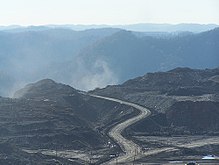DGS49
Diamond Member
I am involved in a discussion on another forum about the concept of "Clean Coal."
Many, many years ago, I worked for a company that was doing research on ways to reduce the Sulphur content of burned coal emissions, and I was led to believe that they were making great progress. Obviously, there are other pollutants in coal, as well as sulfur.
Coal is scorned by tree huggers because it emits (let's say) twice as much CO2 as other fossil fuels for a given BTU value. Take that as a given.
But if you discount CO2 as a "pollutant," where does coal stack up against natural gas, oil, wood, and other fossil fuels? Can it be "cleaned up" sufficiently so that, compared to its carbon "cousins" it is no more harmful to PEOPLE?
In my quick search on the Internet, all of the articles focused on CO2 emissions and gave short shrift to other pollutants.
It has been said metaphorically that the U.S. is the "Saudi Arabia" of coal, so if "clean coal" is a reality or a real possibility (CO2 emissions aside), then we should be pursuing it further, right? Even if we aren't building any more coal-fired plants here, the third world needs the cheapest fuel sources available, and solar & wind & hydro aren't real possibilities for base load generation in those parts of the world.
Is there any such thing as Clean Coal?
Many, many years ago, I worked for a company that was doing research on ways to reduce the Sulphur content of burned coal emissions, and I was led to believe that they were making great progress. Obviously, there are other pollutants in coal, as well as sulfur.
Coal is scorned by tree huggers because it emits (let's say) twice as much CO2 as other fossil fuels for a given BTU value. Take that as a given.
But if you discount CO2 as a "pollutant," where does coal stack up against natural gas, oil, wood, and other fossil fuels? Can it be "cleaned up" sufficiently so that, compared to its carbon "cousins" it is no more harmful to PEOPLE?
In my quick search on the Internet, all of the articles focused on CO2 emissions and gave short shrift to other pollutants.
It has been said metaphorically that the U.S. is the "Saudi Arabia" of coal, so if "clean coal" is a reality or a real possibility (CO2 emissions aside), then we should be pursuing it further, right? Even if we aren't building any more coal-fired plants here, the third world needs the cheapest fuel sources available, and solar & wind & hydro aren't real possibilities for base load generation in those parts of the world.
Is there any such thing as Clean Coal?







